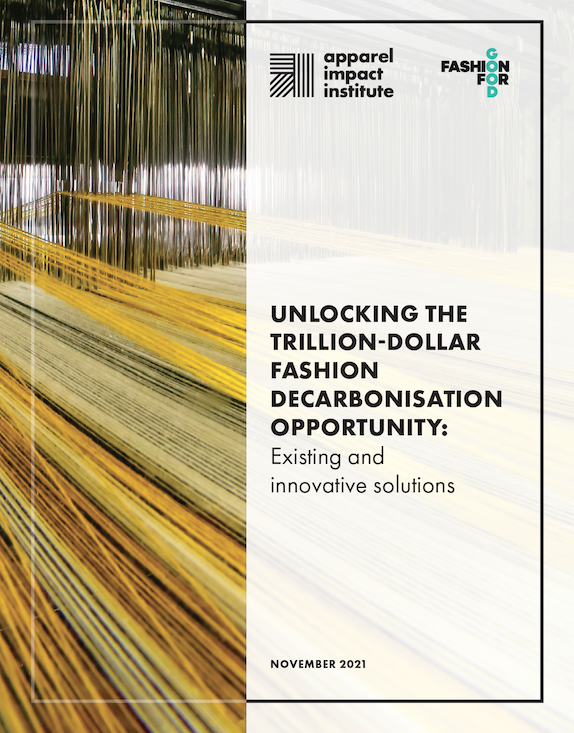
Recent studies estimate more than 2% of the global greenhouse gas emissions stem from the fashion industry. With the global average temperatures projected to rise by 3 degrees Celsius this century – well beyond the 1.5 degrees Celsius goal of the Paris Agreement – disruptive solutions and unprecedented actions are needed to curb emissions and achieve net-zero by 2050.
A new report, co-authored by Fashion for Good and Apparel Impact Institute and sponsored by HSBC, for the first time charts a trajectory for the industry to meet the net-zero ambition, mapping the integral levers across existing solutions, such as renewable energy, and innovative solutions, such as next generation materials. Estimating an investment opportunity of $1 trillion to finance the transition, the report breaks down the funding needed by solution category and identifies the types of funders best placed to take advantage of the opportunity and benefit from the positive returns.
“Unlocking The Trillion-Dollar Fashion Decarbonisation Opportunity: Existing And Innovative Solutions” builds on existing research, as well as the knowledge and expertise of Fashion for Good and Apparel Impact Institute. The report estimates the emissions reduction of existing and innovative solutions, and calculates the finance needed to bring them to scale and drive the industry to net-zero by 2050; a critical step to mapping the path and actions for the fashion industry in the decades to come. The findings in the report are significant – analysis shows an estimated $1 trillion is required to finance the decarbonisation of the fashion industry by 2050.
“Reducing carbon emissions will be one of, if not the, defining challenge of our generation and indeed the fashion industry. The good news is that a strong pipeline of solutions – both disruptive and ready to be implemented – can drastically decarbonise the industry. This report highlights that not only are the opportunities plentiful and financially attractive, but they are key to getting us to a net-zero, circular industry.” – Katrin Ley – Managing Director, Fashion for Good
Though $1 trillion may appear to be substantial, the majority of this spend is allocated to projects that offer an attractive financial, as well as environmental, return on investment and can therefore be funded by financial capital. More than $35 trillion of financial capital is available globally for good return Environmental, Social, and Governance (ESG) investments, a figure expected to exceed $50 trillion by 2025 according to insights from Bloomberg Intelligence. However, critical barriers to unlocking the financial capital needed remain. With input from key industry stakeholders, the report highlights those barriers and presents examples of financing opportunities.
The financing opportunity is multi-faceted and will require a committed and coordinated effort by brands, manufacturers, philanthropy, government, and industry organisations. The report splits up the amount of finance required per emission-reduction solution across the different financiers, appealing to different risk appetites and profiles, and providing a nuanced and detailed pathway to achieving net-zero.
